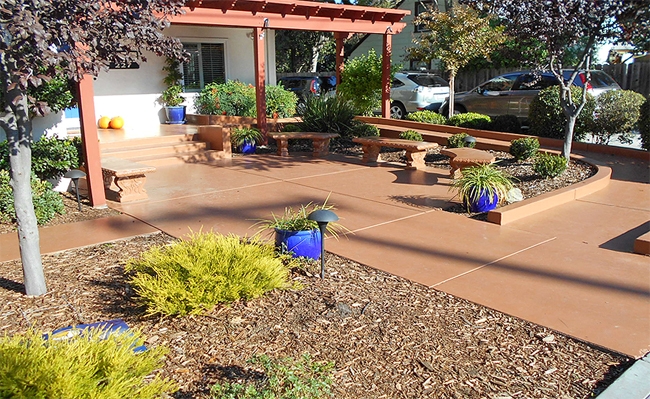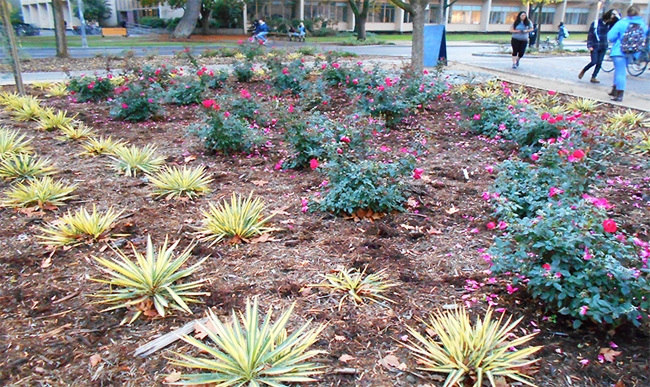By John Karlik, UC Cooperative Extension, Environmental Horticulture/Environmental Science Advisor, Kern County
In a previous article, I noted another dry year is underway. Excessive landscape irrigation is wasteful and can lead to turf and landscape diseases. However, rarely is it necessary to do a landscape makeover to save water, nor will modifications necessarily result in water savings.
The key to saving water outdoors is irrigation scheduling. Modifications to a landscape are of no benefit for water conservation unless the irrigation amount is reduced. Although water conservation is a large topic, here are a few tips and ideas for saving water in landscapes and other outdoor plantings:
Check the irrigation system
Periodically run the irrigation system during the day to check for leaks, missing heads, broken risers, and sprinkler coverage. Repair as necessary.
Determine how much to water
Water needs of plants in home gardens, landscapes, and orchards change by a factor of 10 from winter to summer in much of California, though the exact factor is location specific. Therefore, irrigation schedules should be changed at least four times per year: spring, summer, fall, and winter. In winter, you may be able to turn the system off completely.
Irrigation amounts are usually expressed as depth of applied water. For example, during winter in the southern San Joaquin Valley, about 0.02 inches per day are needed, while in summer the value rises to about 0.25 inches per day. These values do not mean water needs to be applied every day. Weather conditions will affect water needs of plants.
You can measure how much water your sprinklers deliver by placing cans or coffee mugs in the landscape and running sprinklers for a set amount of time. You can also estimate total landscape water use from your water bill by considering water use during winter months as the baseline indoor value, and water in addition as used outdoors. That assumes sprinklers are shut off during winter.
Finally, irrigate and monitor. In other words, check soil moisture between irrigations with a shovel, soil probe, or screwdriver, and adjust the irrigation schedule accordingly.
Determine how often to water
Irrigation scheduling is a combination of frequency (how often) and duration (run-time). As a rule-of-thumb, plan to fill the soil volume containing plant roots and then irrigate again when about half the available water has been used. Therefore, set run-times for each irrigation zone and then add or subtract days depending on season of the year.
Determine when to water
Early morning is best since wind speeds and temperature are low, and less evaporation and wind-loss occur.

What about mulches?
Mulches, such as wood chips or shredded leaves, help save water by reducing evaporation from soil.
What about turfgrass?
Turfgrass is water-thrifty if irrigated carefully. However, turf is often over-irrigated, so reducing the area of turf may lead to water savings. Experimental data show warm-season grasses, such as bermudagrass and the UC release ‘El Toro' zoysia, offer water savings over cool season turfs, such as tall fescue or bluegrass. Buffalograss is even more drought tolerant, but not often planted in California.
What about “drought-tolerant plants?”
Research-based water-use data do not exist for most plants used in landscapes. We often infer drought tolerance from seeing where a plant grows in nature. However, many California natives and plants adapted to Mediterranean climates may not perform well under irrigated conditions. These plants may be susceptible to root rot, for example, if irrigated. Drought-tolerant plants do not of themselves save water. Saving water is instead accomplished by changing irrigation schedules to reduce applied water.
